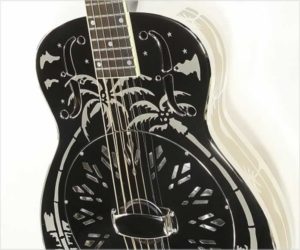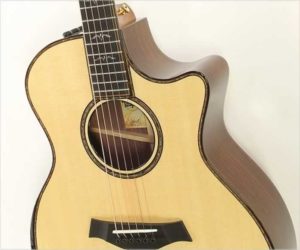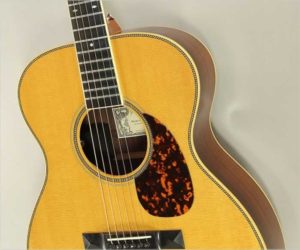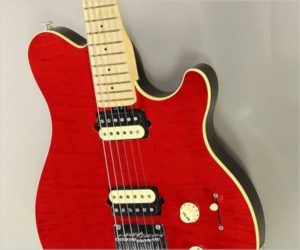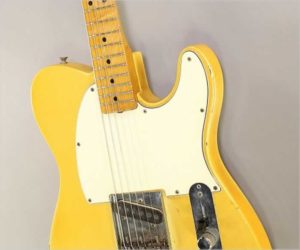The National Style O 14-fret model dates back to the early days of Resophonic guitars, as banjo players migrated to guitar and wanted access to more fret. The 14-fret to the body Style O was introduced in 1935 by the National Stringed Instrument Corporation. It came with either the Traditional Sieve pattern cover plate or the newly introduced Chicken Foot cover plate. in 1935 this guitar had a slotted headstock with a decal.
California
The Taylor 914ce V-Class is a spectacular guitar, delivering top shelf performance in a beautifully crafted package. Pairing Sitka Spruce with Indian Rosewood for the sides and back, and Mahogany with Ebony for the bound fingerboard, headplate and body binding, the Taylor 914ce V-Class also sports the new Ascension inlay pattern, plus soundhole and body outlines, in a Paua and Mother of Pearl. For added comfort, the lower bass bout features a Laskin-style armrest, using Ebony.
This instrument has sold
MORE →This example of the Larrivee OM-60 SH dates to January 14, 2005 and was built at the Larrivee shop in Oxnard, California. It is in good shape, but it has been used as intended and over the years has required some repairs. There are two repaired and cleated cracks in the top. There is a bit of finish chipping and marking, mostly around the edges. Fret wear is moderate, and mostly in the lower positions. However, it plays very well and sounds great.
This instrument has sold
MORE →Here we have an Ernie Ball Music Man Axis Super Sport Hard Tail from 2016, in Trans Red with matching headstock! These use the proven combination of a maple cap on a basswood body and maple neck, with a pair of DiMarzio humbuckers. This example is in great condition, with just the lightest markings on the polyester finish. Wear is completely minimal, and the asymmetric neck feels great. The original hard shell case is included.
This instrument has sold
MORE →A Gregory Byers Classical guitar is rare to see on the used market. He generally builds as many as twelve guitars per year, to order. His instruments are usually built one at a time, allowing Byers to give maximum attention to each specific guitar. Byers builds single top guitars (as opposed to double top), though he does use other techniques such as the ‘Elevated Fingerboard’ which really involves the top dropping down towards the heel.
This instrument has sold
MORE →The Fender Esquire was the single pickup version of Leo Fender’s groundbreaking guitar, and appeared in 1950 with the short-lived Broadcaster, soon renamed Telecaster after a copyright notice from Gretsch, who used that name on a drum line. Structurally, they are virtually identical – many Esquires use Telecaster bodies and necks. The differences between the Esquire and Telecaster revolve around the single pickup. The pickguard is not cut, and the 3-way switch wiring provides a setting with a capacitor-resistor network simulating a neck pickup.
This instrument has sold
MORE →